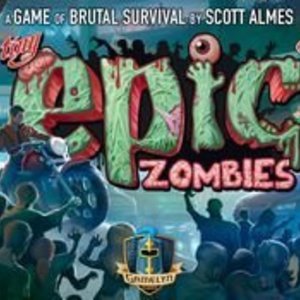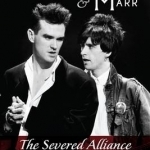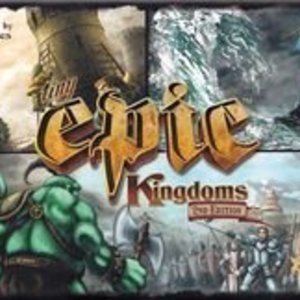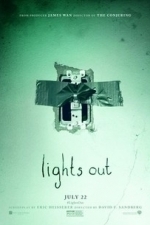
Pay with Rewards
Finance
App
Availability MasterCard Pay with RewardsTM is only available for select MasterCard cards. Please...
Purple Phoenix Games (2266 KP) rated Tiny Epic Kingdoms in Tabletop Games
Jul 30, 2019
In Tiny Epic Kingdoms, you are the ruler of (you guessed it) a tiny kingdom. You, however, are not content with simply maintaining your realm – you have plans to expand your borders and make your kingdom not-so-tiny! Send your adventurers out to explore new lands, learn new magics, construct towers to assert your dominance, and fight off others who would stand in your way! Do you have the strategy necessary to outwit your competitors and grow your kingdom? Play to find out!
DISCLAIMER: There are several expansions to this game, but we are not reviewing them at this time. Should we review them in the future we will either update this review or post a link to the new material here. -T
Tiny Epic Kingdoms is a game of worker placement, area control, and action point allowance. Players take turns gathering resources, buildings towers, researching magic, or exploring (and potentially waging war) in new lands. As the active player, on your turn you will select and perform one of the six available actions from the Action Card: Patrol, Quest, Build, Research, Expand, or Trade. Following your action, and still on your turn, the remaining players will either decide to perform the same action you chose, or collect resources. Once everyone has had the chance to act, your turn is over. The next player now becomes the active player and the process repeats with one big change – the action you chose on your turn is no longer available for selection. Each subsequent active player will always have 1 fewer action choice on their turn. This process repeats until there are no more actions available. When this happens, the Action Card is cleared and all actions are available once more for selection. Strategy is key – which action can you choose on your turn to best benefit you while also inhibiting your competitors? The game ends at the end of the turn in which one of these three things has happened: a player has all of their meeples in play, a player has built the 6th level on the tower card, or a player has reached the 5th level of magic on their faction card. End-game points are scored based on meeples in play, magic level, tower level, and control of Capital Cities. The player with the highest score wins!
For such a small game, there’s definitely a fair amount of strategy involved in Tiny Epic Kingdoms. You’ve got to decide on the best approach for you, and it must be adaptable to any given situation. Do you play it safe, quietly collecting resources, trying to achieve your end-game goals the fastest? Or do you venture out to confront your opponents, trying to usurp their territory and resources and take them out as your competition? Or maybe you try to stay civil, but an opponent is threatening your progress and now you’ve got to fight back? There are lots of strategic options, and every game feels like a new challenge.
One thing I enjoy about Tiny Epic Kingdoms is that you get to act on every single turn, even if you aren’t the active player. You don’t have to sit there and watch your friends play – you have the chance to benefit during every single turn, even if it’s merely collecting resources. The opportunity to act on every turn also adds a little bit of ‘take that’ to this game. I might choose an action on my turn as the active player that I know one of my competitors cannot perform – thus forcing them to collect resources and waste the opportunity to perform that specific action for an entire round. And since that action cannot be picked again until all available actions have already been chosen, I’ve successfully blocked their progress in a certain area of play. Your strategy has to extend beyond just your turn as the active player – you must consider all options for your opponents as well.
The thing I don’t necessarily like about Tiny Epic Kingdoms is that the gameplay can be a little stale. Unless you’re playing with people who actively try to engage with you, it is extremely easy to just stay in your own realm and not even interact with anyone at all. There’s no forced interaction in this game, and although it is admittedly nice sometimes, mostly it just feels like we’re all playing the same game alone. It’s like we all just take turns performing/following actions until someone has triggered the end-game.
Overall, I like Tiny Epic Kingdoms. It’s not my favorite Tiny Epic game, but it’s a good one. There’s a decent amount of strategy involved, but at times it can feel more like a ‘take that’ type game to me. The lack of forced player interaction can lead to dull gameplay and a lackluster experience. It’s not a bad game. It’s just not the most epic Tiny Epic game out there, in my opinion. That’s why Purple Phoenix Games gives it a regal 14 / 18.
Matthew Krueger (10051 KP) rated Lights Out (2016) in Movies
Oct 31, 2020
The plot: When Rebecca (Teresa Palmer) left home, she thought that her childhood fears were behind her. As a young girl growing up, she was never really sure of what was real when the lights went out at night. Now, her little brother Martin (Gabriel Bateman) is experiencing the same unexplained and terrifying events that jeopardized her safety and sanity. Holding a mysterious attachment to their mother (Maria Bello), a supernatural entity has returned with a vengeance to torment the entire family.
is based on Sandberg's 2013 short film of the same name and features Lotta Losten, who starred in the short.
Special effects of having the ghost appear and disappear were mostly done by using a split-screen technique as also used in the short. Sandberg said "Whenever she's in frame with another character, it's basically just a split screen. So you shoot it with her and without her. You turn the camera on with her, you turn it off and she walks off, and then you turn it on again. It's super simple, actually." Sandberg also made a list of what he called the "light gags", or different ways to create light sources from flashlights to cell phones and gunfire. In the scene when Diana appears in Rebecca's room, James Wan suggested replacing passing car headlights in an early treatment with the flashing neon sign that appears in the final film.
Sandberg originally based the character of Rebecca on a real girl that he knew who was suffering from depression, and who was engaging in self-harm, which is why Rebecca has scars on her arms, but the development of the film made it less about depression and more of a ghost story in which Diana would have been the real person who died and became a ghost. Wan came up with the idea of making Diana the ghost. Rebecca's boyfriend was also given a twist of being a rocker, but is actually committed and responsible, even driving a safe car like a Volvo. Another twist Sandberg liked was making the imaginary friend for the mother rather than the trope of having the friend be for the child
Its a excellent supernatural movie.

Tide: Focus, Relax, Meditation
Health & Fitness and Productivity
App
–––– Featured by “Apple Best New App” –––– Tide lets you get things done by...

Tiny Epic Zombies
Tabletop Game
In Tiny Epic Zombies, survivors are always on the run, collecting weapons, killing Zombies and...

Morrissey and Marr: The Severed Alliance
Book
Morrissey & Marr: The Severed Alliance is among the most successful - and controversial - rock...

Economic Struggle for Power in Tito's Yugoslavia: From World War II to Non-Alignment
Book
Here, Vladimir Unkovski-Korica re-assesses the key episodes of Tito's rule - from the joint...

Textile Collections: Preservation, Access, Curation, and Interpretation in the Digital Age
Book
Collections of textiles-historic costume, quilts, needlework samplers, and the like-have benefited...

Ecce Homo by Felicita
Album Watch
The most surprising aspect of the album Ecce Homo is knowing what enigmatic London-based producer...
experimental instrumental


